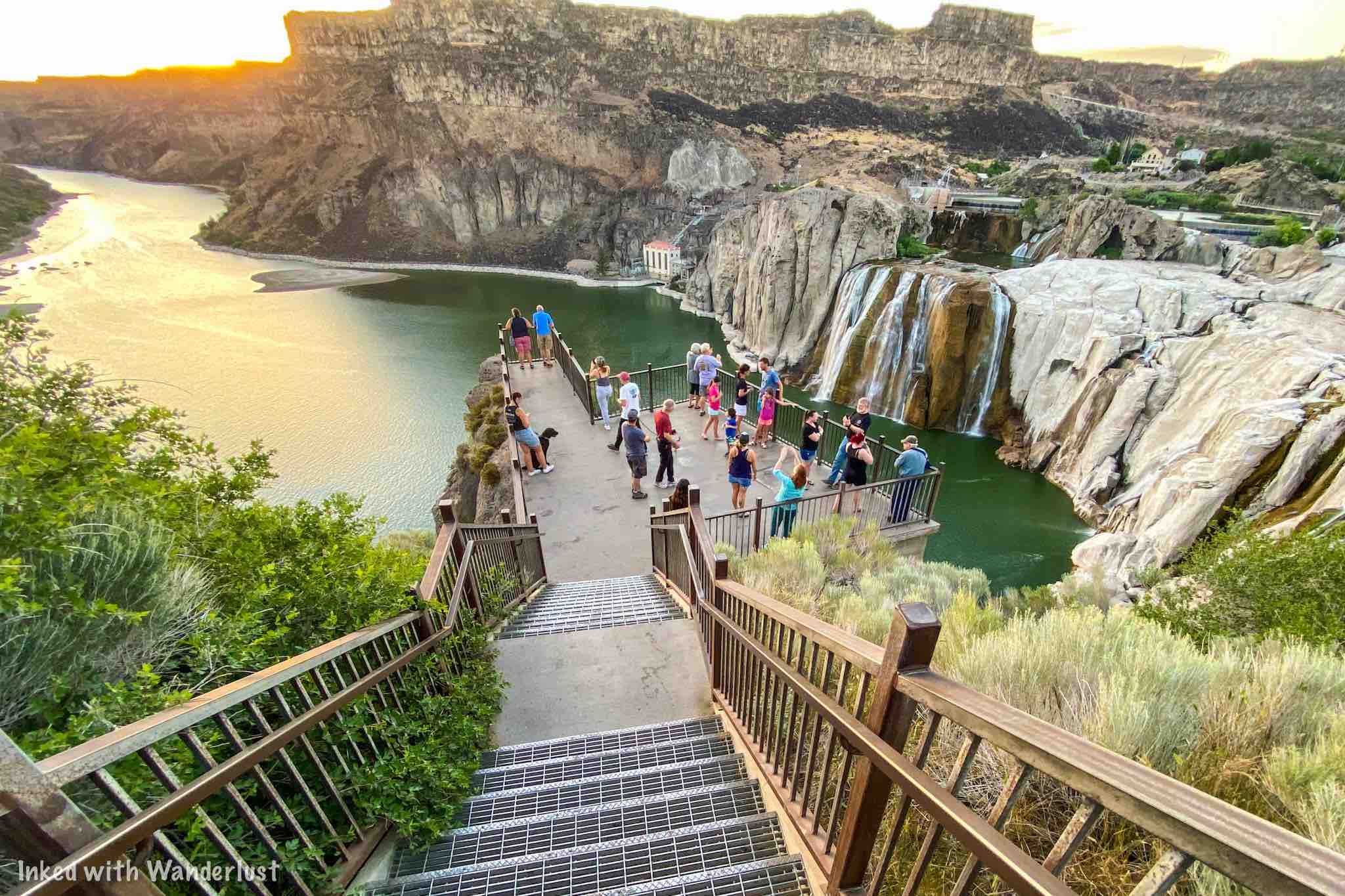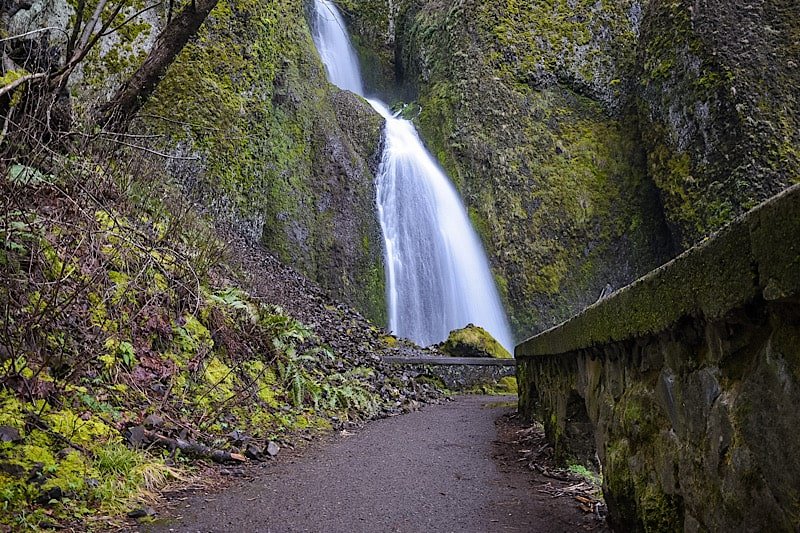Best Time to Visit Shoshone Falls in Southern Idaho
At a height of 212 feet and width of 900 feet, Shoshone Falls is one of Southern Idaho’s most popular natural attractions. Surpassing the height of its New York counterpart, Niagara Falls, it’s fittingly referred to as the Niagara of the West.
Shoshone Falls is located just 7 miles from Twin Falls proper, making it easily accessible to anyone with a car. Its natural beauty, impressive flow, and ease of access makes it abundantly popular, attracting more than five hundred-thousand spectators annually.
Despite its popularity, Shoshone Falls doesn't always flow at its fullest. This is due to both natural reasons, such as snowmelt, and agricultural reasons, as a portion of the river that feeds the falls is diverted for irrigation purposes, which reduces the flow over the falls.
There's nothing worse than arriving to the falls, expecting to see it in all its grandeur, and see nothing but a drip. That happened to me on my first visit, so I want to help reduce your chances of that happening. This post will cover (what I feel) is the best time to visit Shoshone Falls. I'll also discuss getting there, fees, what to expect, and more.
Getting to Shoshone Falls
As stated above, Shoshone Falls is located just seven miles outside the city of Twin Falls in Southern Idaho and getting to the falls is fairly straightforward. Starting from Twin Falls:
You’ll head northeast on Shonshone Street towards 2nd Ave
Take a slight right on Addison Ave
Turn left on Champlin road. Stay on for 2.5 miles and stay left at the junction before arriving at the parking lot
For GPS purposes, the exact address is 4155 Shoshone Falls Grade Road, Twin Falls, ID 83301
On the way, you’ll drive through beautiful farmlands before descending into an impressive canyon as you make your way to the falls. If you pay attention and you’re here at the right time of year, you’ll see little streams of water descending the canyon walls around you, making it an impressive sight. This usually occurs in early spring or late spring.
Parking and Entrance Fees
Between the months of March and September, there is a fee to visit the falls (and Dierkes Lake, which is also within the confines of Shoshone Falls Park). The fee is just $5 per vehicle. You'll pay at the toll booth near the entrance. You can pay with cash or credit/debit card. If you plan to visit five or more times during the season, consider purchasing an annual pass at just $25.
It’s worth mentioning that when we came here in late June (close to sunset), there wasn't anyone present collecting fees, nor was there a self-pay station. We just drove right in and parked, prepared for someone to approach us for the fee, but no one ever did. Not sure if this is a common occurrence, though.
The parking lot is fairly large and paved, capable of holding many vehicles, RVs, and tour buses. If you're here is the summer months, there's a good chance the lot could fill. Be prepared for that possibility. For weekends in the summer, I would plan to arrive early.
Shoshone Falls Observation Deck
From the parking lot, there are a few viewing platforms to see the falls from. The middle one (the closest, most popular and largest) is right off the lot and is accessed by a stairwell. Uphill and to the right is where you’ll find another viewing platform. This one was our least favorite as there was lots of shrubbery blocking the view.
In the opposite direction, to the left, is a higher platform and was our favorite as it gave us a great view of not just the falls, but the Snake River as well. This viewing area was also muchless crowded than the main one.
If you're here at the right time of year when the spring runoff is at its peak, the roaring sound of the falls you'll hear from the observation deck is an unreal experience.
Best Time to Visit Shoshone Falls
This was something I wish I researched more before going. Starting in the summer, much of the river is diverted for irrigation purposes, and this causes the flow over the falls to dissipate to near dry levels (we were here in late June and flow was minimal). If there's a healthy amount of snowmelt, you'll still see a decent flow, though.
If you come in the fall, the falls will look nearly dry as the snow has mostly melted away by this point, as the remaining flow is used to recharge the reservoir system upstream. This process usually begins in late summer. If you must stick with the summer months, then early summer is your best bet.
Winter is a craft-shoot, as the flow can be decent. However, there's always the possibility of a portion of the falls freezing over, reducing the flow. In addition, you'll be dealing with potentially slick conditions on not just the road, but the viewing decks as well.
All that said, in my opinion, the best time to visit Shoshone Falls is between the months of April and early June. April is right about when the snowmelt begins to show itself and if it was a healthy winter, the impressive water flow will continue throughout spring.
Around late May to early June is when you'll begin to see a reduction in the flow of the river, as that's when the irrigation process begins. If you're here during these times (or later in the summer), your best bet would be to arrive early, as Idaho Power typically diverts later in the day, leaving the morning with decent flow.
Nearby Attractions in Twin Falls
Shoshone Falls may be the most known attraction in the area, as it’s Idaho’s largest waterfall, but you could easily spend a few days or more exploring everything Twin Falls (and the surrounding area) has to offer. Below are just a few of my top suggestions.
Evel Knivel Jump Site
Located downstream from Shoshone Falls is where you’ll find the location where famed daredevil, Evel Knievel, attempted to launch himself over the Snake River in a steam powered “skycycle”. You’ll scratch your head in disbelief when you see for yourself the sheer magnitude of this attempted jump and make you wonder what the @#$! he was thinking.
Perrine Bridge
Further downstream from the falls and jump site is the Perrine Memorial Bridge. This impressive bridge spans 1500 feet across Snake River Canyon and connects the cities of Twin Falls and Jerome. Both sides of the bridge have parking lots and viewing decks and much like most popular bridges, there’s a pedestrian walkway you can utilize.
Twin Falls Visitor Center
Near the Twin Falls side of the bridge is where you’ll find the city’s visitor center. It’s a beautiful building that features merchandise, knowledgeable employees, photography displays of local attractions, and its own viewing deck of the canyon, bridge, and river.
Shoshone Ice Caves
Located outside the town of Shoshone, Idaho (about 45 minutes from Twin Falls), the Shoshone Ice Caves tour is a MUST if you’re in the area. Your tour guide will take you through a 1,000 foot lava tube on walking planks above the ice. On a hot day, this is the perfect activity to take part in.





























